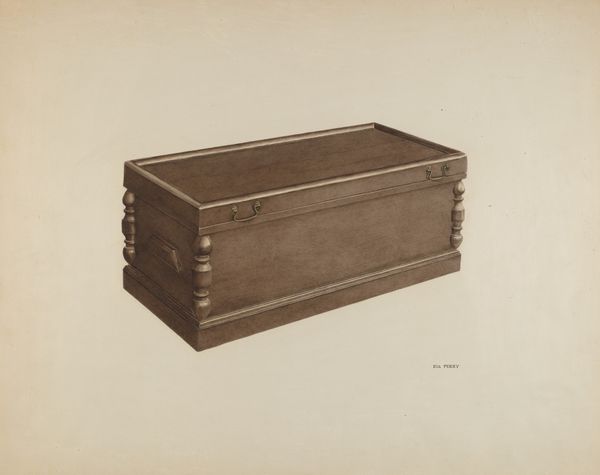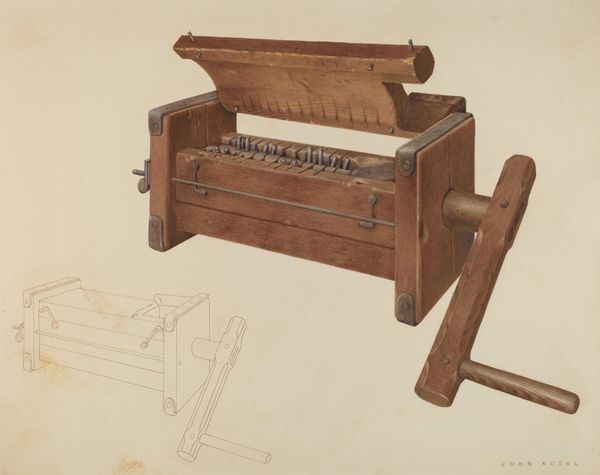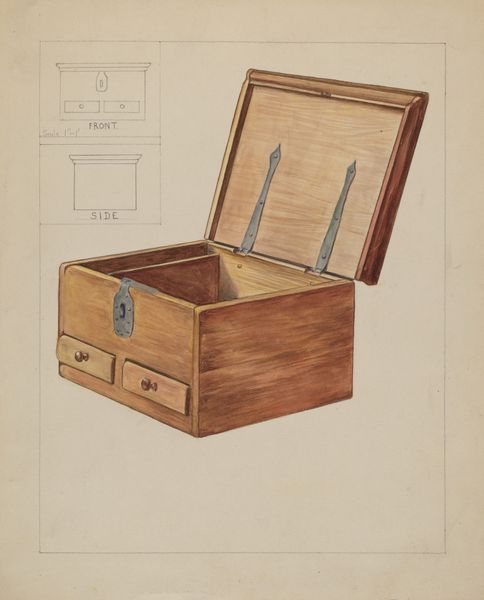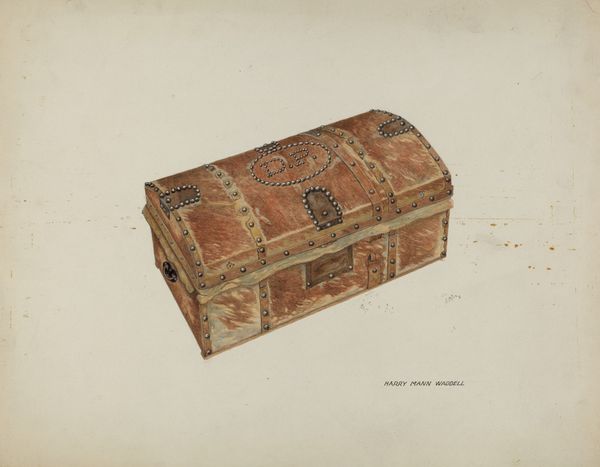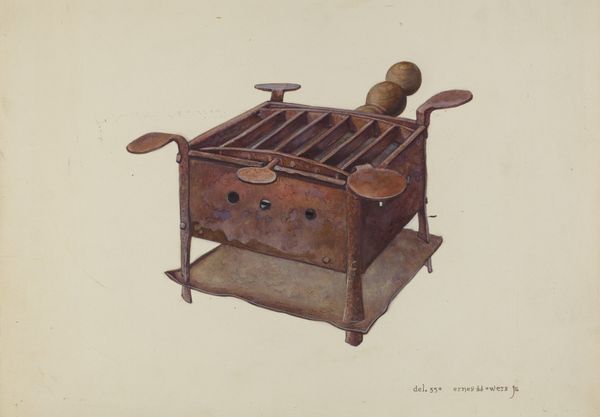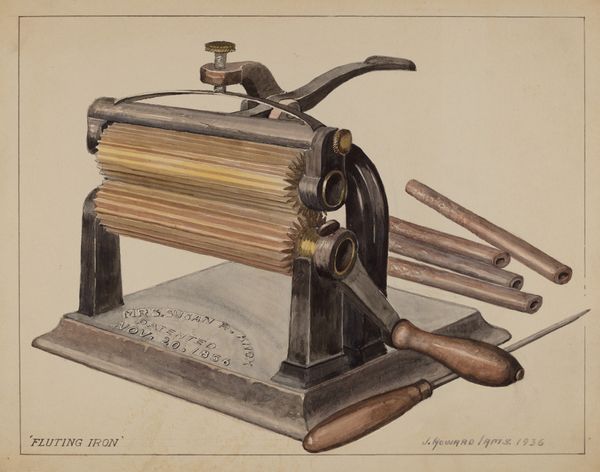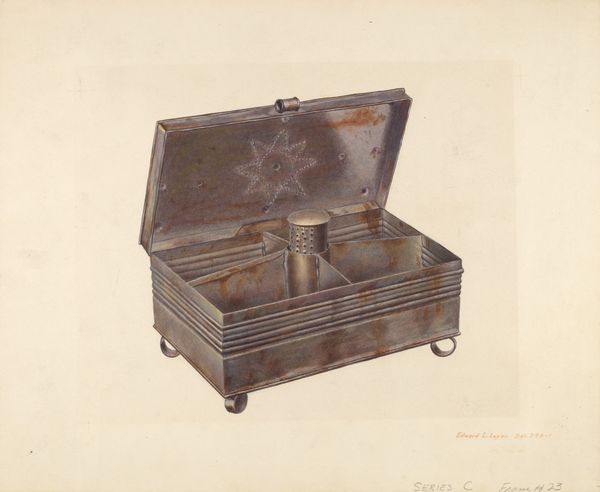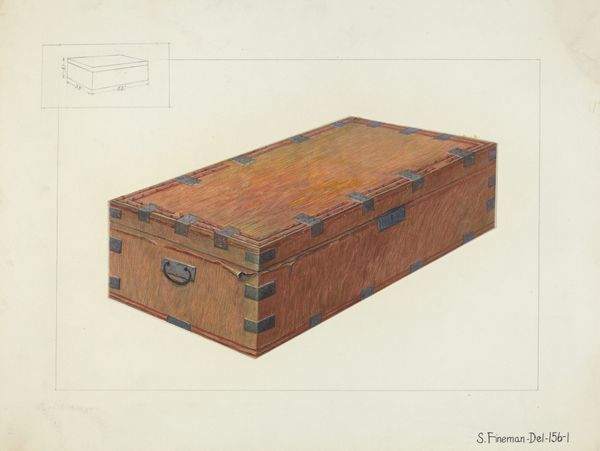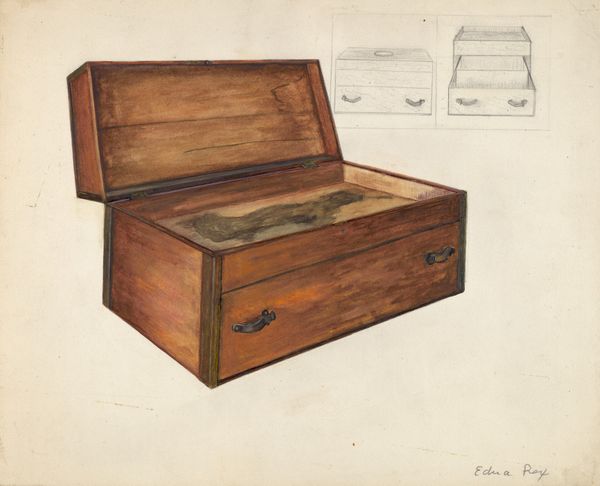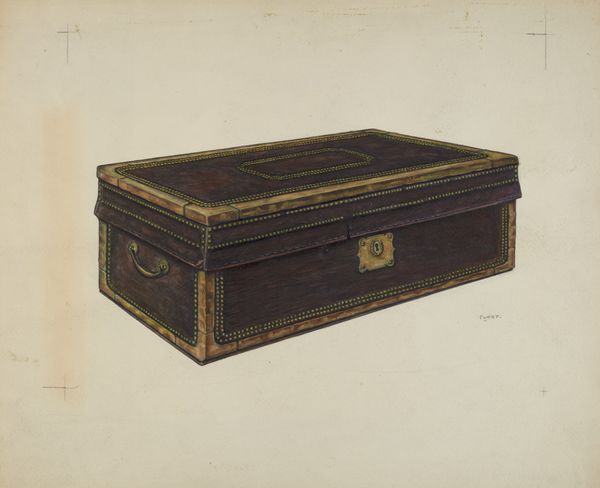
drawing, painting, watercolor
#
drawing
#
painting
#
charcoal drawing
#
watercolor
#
watercolour illustration
#
watercolor
Dimensions: overall: 25.3 x 35.7 cm (9 15/16 x 14 1/16 in.)
Copyright: National Gallery of Art: CC0 1.0
Curator: What a charming object. The even lighting and detailed rendering give the impression it is sitting right here with us. Editor: It has an incredible stillness, almost a melancholic quality despite the subject being an instrument that creates music. It's a fascinating juxtaposition. Curator: Indeed. This piece is titled "Melodeon" and was created around 1939 by Regina Henderer. It combines watercolor and drawing techniques, likely charcoal, to create a striking image. It depicts a musical instrument designed for domestic use, a type of small reed organ popular in the 19th century. The work offers insight into musical practices and tastes in homes and community settings of the time, particularly within middle-class domestic culture. The artist meticulously renders the object’s materials, from the wood grain to the metallic components and even the perforated paper roll which gives it an incredible sense of tactile realism. Editor: Yes, you're right to point out those details. The grain is so important here, creating both surface and volume. I'm really drawn to the contrast between the machine-made regularity of the cylinder's holes, against the implied textures of the wood grain, a real dialogue between industry and nature...even if nature is only there as a mimetic layer of visual reference. The artist uses the texture almost like language, repeating little foliate figures which become absorbed within the woodwork like whispers. Curator: I see what you mean. Perhaps Henderer is attempting to soften the technological aspect of this mass-produced device by drawing it with attention to natural materials. These foliate motifs mimic patterns, blurring divisions of art and decoration in commercial manufacturing. I’m struck by the artist's investment of labor representing what was originally a utilitarian, though luxurious, item available through mechanized, impersonal labor. Editor: The interplay of geometric shapes and soft color palette helps create a gentle tone that makes it easier to miss those tensions embedded within the design itself. There's an intimate and vulnerable sensibility to the whole, like a private portrait of a long-gone member of the family. Curator: It's as though she wanted to imbue a mechanical object with individuality and history, rescuing the soon-to-be obsolete Melodeon from being just another piece of forgotten technology. This work functions as an allegory of obsolescence. The very making is, in effect, a making-do, and a memorializing act. Editor: Absolutely, I'm left with an enriched understanding of both its objecthood and its social, symbolic dimensions! It really comes alive for me now!
Comments
No comments
Be the first to comment and join the conversation on the ultimate creative platform.
